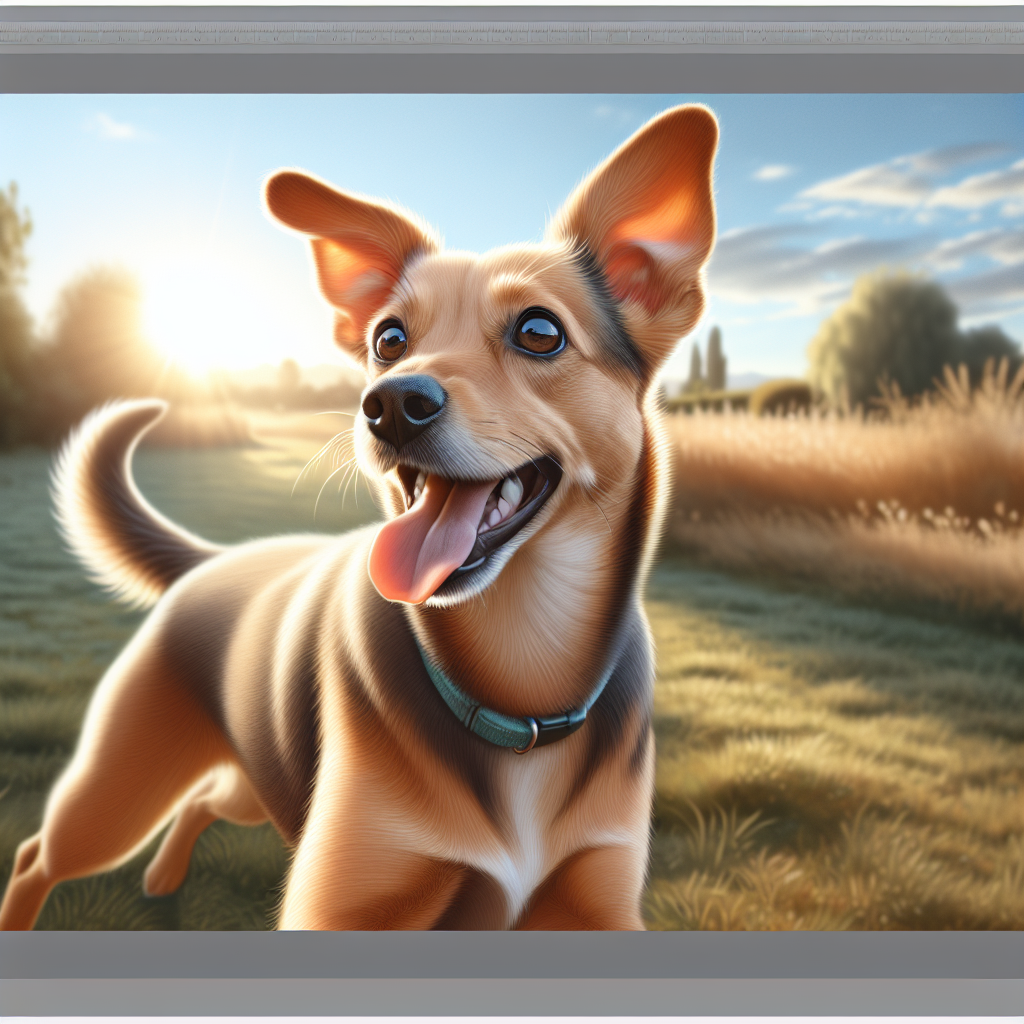Meet the Flea: A Tiny Bloodsucker

Ah, the flea. That pint-sized pest—an acrobat in the world of bugs. These little bloodsuckers have been around forever, causing chaos wherever they leap. Picture this: a flea can jump up to eight inches high. That’s like a human jumping over a skyscraper. And they do it with such flair, it’s almost impressive. Almost. But when they’re not showing off their Olympic-level jumping skills, they’re hitching rides on pets and people.
Now, if you’re wondering why anyone would want to know about fleas, well, they’ve got quite a reputation. Ever heard of the Black Death? Yep, fleas played a part in spreading it. They’re small but mighty—or at least mighty annoying. So, if you’re dealing with an infestation, you’re not alone. But more on that later. Right now, let’s just appreciate—or maybe not—the flea’s tenacity and knack for survival.
The Flea Lifecycle: A Hitchhiker’s Guide
Fleas don’t just magically appear—they’ve got a whole lifecycle, like some twisted nature documentary. They start as eggs. Tiny, almost invisible eggs. These eggs are laid on your pet but fall off into your carpet or bedding. Cozy, right? After a few days, they hatch into larvae. These little guys feed on organic matter, which is just a fancy way of saying they eat whatever’s around.
Then comes the pupal stage. It’s like a teen going through an awkward phase, wrapped in a cocoon. But don’t let that fool you. They’re just biding their time, waiting for the perfect moment to emerge as adults. And once they do, they’re on a mission—to feed and reproduce. It’s a never-ending cycle of jump, bite, lay eggs, repeat.
Understanding these flea lifecycle stages is key to tackling them. You’ve got to break the chain—or else it’s like trying to stop a runaway train with a feather.
Flea Habitats: Where They Hang Out
Where do fleas live? Well, they’re not picky. They love warm, humid places. Think your cozy couch, your pet’s favorite bed, or even that pile of laundry you keep meaning to fold. Fleas are like that friend who never leaves your house. Once they’re in, they make themselves at home.
Outside, they hang out in tall grass, shaded areas, and under your porch. They’re waiting for a ride—like a bunch of tiny hitchhikers with their thumbs out. And once they catch a ride, they’re in for the long haul.
If you’re living in a place where the weather’s warm year-round, well, lucky you—but also unlucky you. Fleas thrive in those conditions. So, if you’re dealing with a flea infestation, you’ll need to take action. Get rid of them before they throw a party and invite all their friends.
The Impact of Fleas on Pets and People
Let’s talk about the real victims here—our pets and, sometimes, us. Fleas on pets are a nightmare. They cause itching, scratching, and even hair loss. And if that’s not enough, some pets develop allergic reactions to flea saliva. Yeah, it’s as gross as it sounds.
You know those flea infestation signs? Like your dog scratching like he’s auditioning for a role in a horror movie? Or those little black specks on your cat’s skin? That’s flea dirt—fancy talk for flea poop. And you’ll want to handle it ASAP.
Flea bite effects on humans aren’t much better. Red, itchy bumps that can drive you crazy. And if you’re unlucky, you could even get a nasty infection. It’s like the fleas are laughing at you, saying, “You thought you could ignore us?”
Identifying Fleas: Spotting the Little Buggers
Flea identification tips are a must if you’re going to win this battle. Start with your pets. Comb through their fur with a fine-toothed comb. You’re looking for fleas or their droppings. Sounds like a fun evening, right? But it’s necessary.
Wondering how to find fleas on pets? Check around their neck and tail. Fleas love those spots. If you find any, you’ve got work to do. And if you don’t, well, keep checking. They’re sneaky little buggers.
If you find fleas, it’s time to act. You’ve got to be relentless—like a detective on a case. Get rid of them before they overrun your home. Trust me, you don’t want a flea circus in your living room.
So, there you have it—the lowdown on fleas. They’re tiny, annoying, and resilient. But with the right knowledge, you can show them the door. Thanks for sticking with me on this flea-ridden journey. Now, go forth and conquer those pests!
Life Cycle of a Flea: The Tiny Terror’s Journey
Alright, folks, let’s dive into the wild world of fleas. These tiny terrors might be small, but they’re fierce. It’s like they took a crash course in survival. The flea life cycle stages are a rollercoaster, starting with an egg and ending with an adult flea ready to ruin your day. Picture this: a female flea hops onto your pet, feasts like it’s a buffet, and then lays eggs—up to 50 a day. That’s like fleas throwing a house party in your living room.
These eggs drop off and hatch into larvae, which love dark, humid corners. Out of sight, out of mind, right? Not exactly. They spin cocoons and emerge as adult fleas, ready to hop back onto the nearest host. It’s an endless loop, a flea version of Groundhog Day. I know, it’s enough to make you itch just thinking about it.
How Fleas Affect Our Furry Friends
Now, let’s talk about our furry companions. The bond we have with our pets is special, and nothing ruins that faster than fleas. Fleas on dogs symptoms include relentless scratching, red bumps, and a general look of misery. Your pooch might even start losing fur—and trust me, no one wants to deal with a bald dog.
It’s not just about the itching. Fleas can carry diseases and cause anemia in severe cases. Picture it: your once lively pup, now lethargic and uncomfortable. Heartbreaking, right? It’s like watching your favorite movie character go through a rough patch. You can’t help but feel for them.
The Great Flea Battle: Prevention and Control
So, what’s the best flea prevention for pets? It’s a question that haunts pet owners everywhere. There are countless products on the market, but finding the right one feels like trying to pick a favorite child. Some swear by monthly treatments, while others opt for collars or shampoos. It’s a bit of trial and error.
But don’t just focus on your pet. How to prevent fleas in the house is just as crucial. Vacuuming regularly, washing pet bedding, and treating your yard can make a world of difference. It’s like building a fortress around your home—except, you know, a flea-free one.
Natural Flea Remedies: Grandma’s Wisdom or Old Wives’ Tales?
Ah, natural flea remedies for pets—a topic that can start a debate quicker than you can say “lemon juice.” Some folks stand by them, while others roll their eyes. There’s something endearing about the idea of battling fleas with ingredients from your pantry. It’s like going back to simpler times.
You might hear about using vinegar, essential oils, or even diatomaceous earth. Do they work? Well, it depends on who you ask. Some pet owners swear by them, while others see them as old wives’ tales. It’s a bit like choosing between a classic novel and a new bestseller—each has its fans.
The Aftermath: Cleaning Up the Flea Mess
So, you’ve fought the good fight and won the great flea battle. But what now? Cleaning home after fleas is a task that requires some grit. Flea infestation cleanup tips include vacuuming every nook and cranny—think of it as your workout for the week.
Wash everything your pet has touched, and maybe even things they haven’t. It’s like spring cleaning, but with a touch of paranoia. Fleas are tenacious, and the last thing you want is a comeback tour.
Remember, it’s not just about the mess. It’s about ensuring your pet’s comfort and happiness. After all, they’re the real victims in this saga. So, roll up those sleeves, put on some music, and tackle the aftermath like a pro.
And hey, thanks for sticking around. Here’s to flea-free days and happy pets. Good luck out there!
The Flea Invasion: Unseen Battles in Your Home
So, you’re chilling on your couch. Everything’s calm, right? Out of nowhere—like an invisible army—fleas invade your living room. It’s not even fair. These critters are like tiny magicians, turning up where you least expect. The signs of flea infestation at home? Oh, they’re sneaky. Ever notice your pet scratching more than usual? That’s one. Or those mysterious little bites on your ankles—yep, that’s another. Before you know it, you’re knee-deep in flea territory.
Fleas don’t just crash your living room; their favorite hiding spots are your pet’s cozy bed, the carpet, and even your own bed. It’s like they have some sort of radar for comfort zones. But hey, don’t lose hope. Those fleas are tough, but you’re tougher. You’ve got to watch for those signs and gear up for the unseen battles in your home. It’s a war zone, but with the right mindset, you can win.
Flea Control: A DIY Guide for Every Pet Owner
Now, if you’re like me, you’d rather handle this yourself. No need for fancy gear or pricey solutions. We’re talking DIY flea control methods that even your grandma would approve of. Got a vacuum? Great. It’s your best friend now. Run it over every inch of your home—twice if you can. And don’t forget that soapy water. It’s magic for those little fleas.
Did you know that fleas hate salt? Sprinkle it on your carpet, let it sit, and then vacuum it up. It’s like a mini-flea apocalypse. And speaking of apocalypse, don’t forget to wash all your pet’s bedding in hot water. It’s the simplest things that pack the biggest punch.
And here’s another trick up your sleeve—lemon spray. Yeah, you heard me right. Boil a sliced lemon in water and let it sit overnight. Spray it around your home the next day. Fleas can’t stand the stuff. It’s a DIY arsenal that doesn’t break the bank. You’re not just a pet owner now—you’re a flea-fighting warrior.
The Cost of Ignoring Fleas: Financial and Emotional Tolls
Ignoring fleas? It’s like ignoring that leaky roof. Sure, you can pretend it’s not there, but it’ll cost you. Big time. Financially, it’s a drain. Vet bills, flea treatments, even repairing furniture—those dollars add up. It’s a real hit to the wallet. But the emotional impact? That’s a whole other level.
Ever seen a pet drive itself crazy with scratching? It’s heartbreaking. You feel helpless watching your furry friend suffer. And trust me, it tugs at your heartstrings more than you’d think. It’s stressful and leaves you feeling guilty. Like you should’ve done more, or noticed it sooner. But that’s life, right? You learn and move forward.
So, let’s head it off before it spirals. Keep your eyes peeled for those infestation signs. Act fast and don’t let it get to the point where you’re paying with both your wallet and your heart.
Fleas and the Great Outdoors: What to Know for Adventures
Now, let’s shift gears. Picture this: you’re out in the great outdoors. Hiking, camping, having a grand old time with your pet. But here’s the kicker—those fleas love the outdoors as much as you do. It’s their playground. But hey, don’t let them spoil your fun.
Outdoor flea prevention tips? They’re simpler than you think. Start with a good flea collar. It’s like your pet’s armor against those pesky invaders. And before you head out, check your pet for any hitchhikers. A fine-toothed comb works wonders. It’s worth the few extra minutes to keep those fleas at bay.
And when you’re back from your adventure, give your pet a good bath. A bit of dish soap in the bathwater can help drown those fleas. It’s all part of your pre-and post-adventure checklist. Because who wants a camping trip cut short by fleas? Not you, that’s for sure.
Saying Goodbye to Fleas: Final Thoughts and Encouragement
As we wrap this up, remember—you’re not alone in this flea fiasco. We’ve all been there. Scratching our heads, wondering, “Why me?” But you’ve got the tools now. It’s time to say goodbye to those pesky fleas once and for all.
It’s been a ride, but you’re ready. You’ve got the know-how and the elbow grease to tackle this head-on. Your pet is lucky to have someone like you looking out for them. So, here’s to a flea-free future. Thanks for sticking around and reading. You’ve got this, and you’ve got my respect. Cheers!
Quick Takeaways:
Alright, let’s talk about fleas. These tiny jumpers are more than just a nuisance—they’re a full-on invasion. Fleas can turn a peaceful home into a battleground. They hide in cracks and crevices, making it feel like they’re everywhere at once. Ever wondered about the flea lifecycle stages? It’s a mystery wrapped in an enigma. They start as eggs, morph into larvae, then pupae, and finally adults. It’s like a bad sci-fi movie. And where do fleas live? Anywhere they can hitch a ride—your carpet, your pet, even you.
Now, let’s get into signs of fleas on pets. You might notice them scratching like there’s no tomorrow. Red bumps, hair loss, and flea dirt—yep, that’s flea poop—are dead giveaways. And if you’re wondering how to find fleas on pets, a flea comb is your best friend. Run it through their fur and check for tiny black specks.
Flea bites on humans? Oh, they’ll leave you itching and cursing. It’s not just annoying—it can mess with your peace of mind. And when it comes to flea infestation signs at home, think beyond the obvious. Itchy pets, mysterious bites on your ankles, and tiny black specks on the floor are all clues.
Thinking of flea prevention? Natural flea remedies for pets can be a lifesaver. And don’t forget to vacuum like there’s no tomorrow. Regular cleaning helps keep the invaders at bay. So, tell me about fleas again? They’re tenacious, but with a bit of grit and know-how, you can kick them to the curb.
FAQs:
1. *Tell me about fleas—how do you know if you have them at home?*
If your pet’s scratching like a madman, that’s your first clue. Check for fleas on pets symptoms like red bumps or bald patches. And those tiny black specks? Flea dirt. You might also notice bites on yourself—fleas love ankles. Another tell? Seeing the little jumpers on your carpet or couch. If you spot even one, there are likely more.
2. *What are the flea lifecycle stages?*
Fleas go through four stages. They start as eggs, laid in batches of 20 or more. They hatch into larvae, which hide in dark places like carpet fibers. Then they spin cocoons and become pupae, waiting for the right moment to emerge as adults. The whole process can take a couple of weeks or a few months, depending on conditions.
3. *How can I find fleas on my pet?*
Use a flea comb—it’s a simple tool but effective. Part your pet’s fur and run the comb through it. Check for fleas or flea dirt. Focus on hot spots like around the neck and tail. Pay attention to any sudden itching or biting, those are signs too.
4. *What are the flea bite effects on humans?*
Flea bites can itch something fierce. They show up as red, itchy bumps, often in clusters. They can drive you nuts. In rare cases, they can cause allergic reactions. The key is not to scratch—easier said than done, right?
5. *Tell me about fleas and how to prevent them in the house.*
Start with your pet—use the best flea prevention for pets. Keep your home clean. Vacuum regularly—fleas hate that. Wash pet bedding often in hot water. Consider natural flea remedies for pets, but know they might not be as effective. And don’t forget outdoor flea prevention tips—keep your lawn tidy. Fleas love tall grass.
Conclusion:
So, there you have it—the lowdown on fleas. Those little buggers are more than just a bother. They’re a full-scale assault on your peace and sanity. When someone says, “Tell me about fleas,” you can now list their favorite hangouts and explain their lifecycle stages like a pro. You’re armed with flea identification tips and know how to find fleas on pets. You get the emotional toll they take on our furry friends and us. It’s no walk in the park, but you’ve got the tools to tackle them head-on. Remember, prevention is better than cure—yeah, it’s a cliché, but it’s true. With regular cleaning and a bit of vigilance, you can keep your home flea-free. Thanks for sticking with me, and here’s to a future where the only thing jumping on your couch is you. Cheers!
References:
1. https://www.petmd.com/dog/general-health/fascinating-facts-about-fleas
2. https://www.webmd.com/pets/spot-fleas
3. https://en.wikipedia.org/wiki/Flea
4. https://www.britannica.com/animal/flea
5. https://www.betterhealth.vic.gov.au/health/conditionsandtreatments/fleas
Our solution eradicates fleas on contact without harmful chemicals, ensuring a safe environment for your pets and family. Easy to use and highly effective, SayByeBugs helps you maintain a flea-free home. Learn more and order today at SayByeBugs.com
Our solution eradicates fleas on contact without harmful chemicals, ensuring a safe environment for your pets and family. Easy to use and highly effective, SayByeBugs helps you maintain a flea-free home. Learn more and order today at SayByeBugs.com








